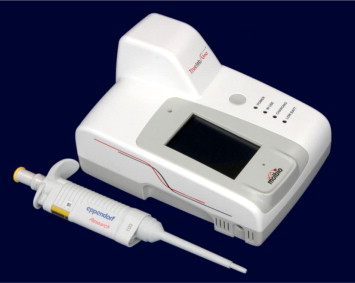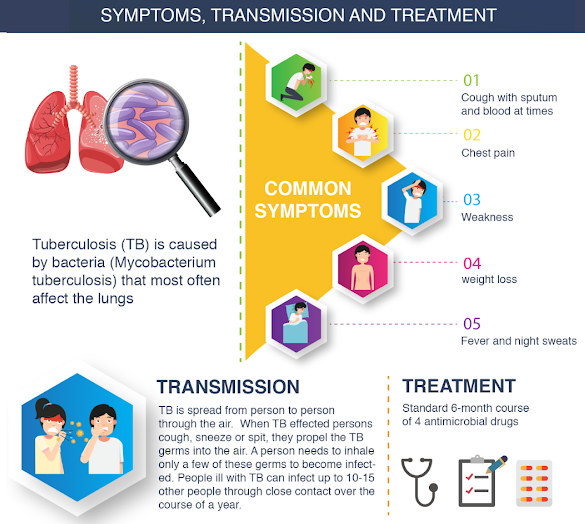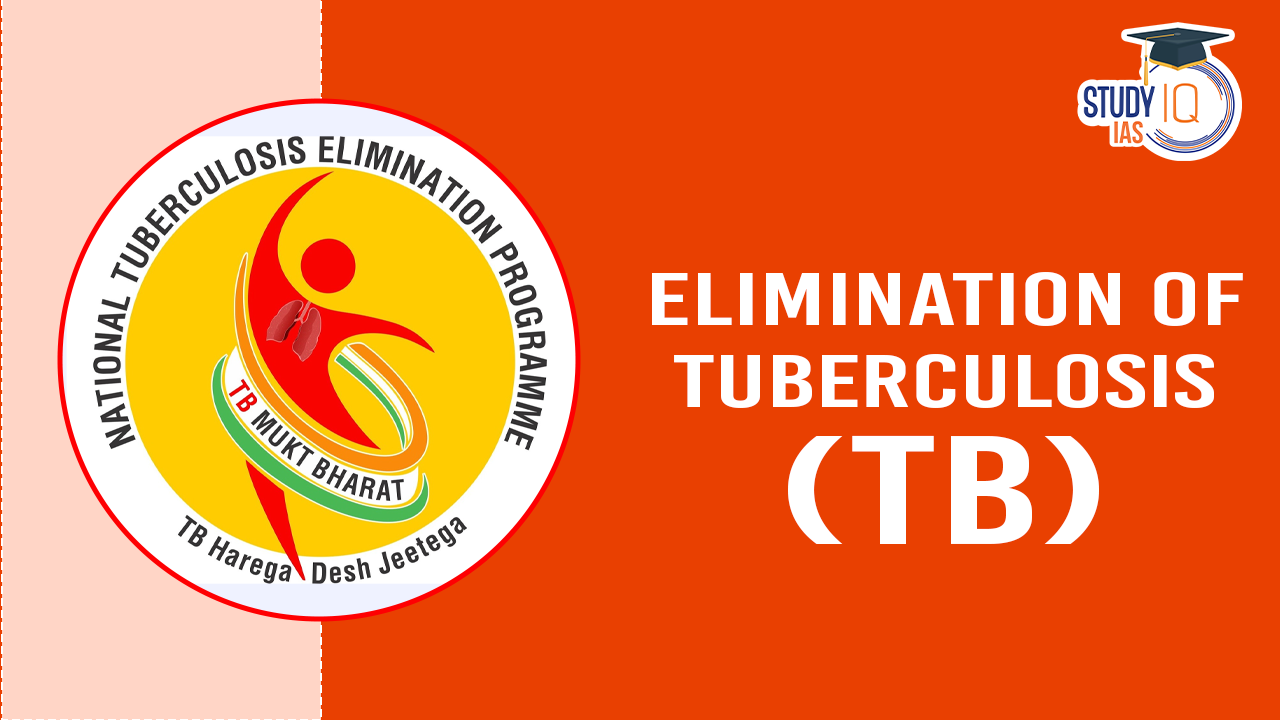Table of Contents
Context: India’s ambitious target to significantly lower TB morbidity and mortality and aim for its elimination by 2025 has stalled. Truenat is a rapid molecular test developed in India for diagnosing pulmonary, extrapulmonary, and rifampicin-resistant tuberculosis.
More In News
- The Indian Council of Medical Research (ICMR) is considering adjustments to the TB treatment protocol, including changes in medication and treatment duration, to revitalise the campaign to eradicate TB.
- Despite over 50 years of TB control efforts, tuberculosis remains the most critical health crisis in India.
- TB is responsible for the deaths of approximately 480,000 Indians each year, which translates to over 1,400 deaths daily.
- Annually, more than a million TB cases in India are ‘missing’ or unreported, with many cases either going undiagnosed or inadequately treated, particularly in the private sector.
- It was recognized at the 77th World Health Assembly in Geneva for its significant role in combating TB and its potential in global healthcare solutions.
- Truenat is the first molecular test recommended by the WHO for TB and rifampicin resistance detection at sites with minimal infrastructure.
About Truenat Molecular Testing
- Developed: By Goa-based Molbio.
- Launched: In 2017
- Features:
- It is a portable, battery-operated real-time quantitative micro-PCR system.
- It can be deployed at labs, health centres, and in the field, delivering results in less than an hour.
- It can test for over 40 diseases using disease-specific chips, including a test for COVID-19.

- Significance: Early diagnosis and treatment are critical in combating TB, which kills an estimated 480,000 Indians annually, with India accounting for 27% of the global TB burden.
Impact
- Truenat has approximately 10,000 installations worldwide, with countries reporting significant improvements in TB case detection.
- In India, Truenat is used at over 7,000 primary and community health centres under the National TB Elimination Programme and at about 1,500 private labs.
- Following approval by its national regulatory authority, India is also using Truenat for decentralised COVID-19 testing, with over 9 million tests supplied so far.
Related Information
- To help countries in planning for adoption and scale-up of the tests, the Stop TB Partnership has also launched a Truenat Implementation Guide, developed jointly with the United States Agency for International Development (USAID) and the Global Laboratory Initiative (GLI).
- Rifampin, also known as rifampicin, belongs to the antimicrobial class of drugs.
- This medication is used to manage and treat diverse mycobacterial infections and gram-positive bacterial infections.
About Tuberculosis (TB)
- Tuberculosis (TB) is a bacterial infection spread through inhaling tiny droplets from the coughs or sneezes of an infected person.
- TB is caused by a bacterium called Mycobacterium tuberculosis, belonging to the Mycobacteriaceae family.
- Worldwide, TB is the 13th leading cause of death and the second leading infectious killer after COVID-19 (above HIV/AIDS).
- Transmission: TB spreads from person to person through the air. When people with lung TB cough, sneeze or spit, they propel the TB germs into the air.
- In humans, TB most commonly affects the lungs (pulmonary TB), but it can also affect other organs (extra-pulmonary TB).

- Cure: TB is a treatable and curable disease.
- Vaccine: Currently, Bacille Calmette-Guérin (BCG) is the only licensed vaccine available for the prevention of TB.
-
- BCG works well in some geographic locations and not so well in others.
- Generally, the farther a country is from the equator, the higher is the efficacy.
- It has a high efficacy in the UK, Norway, Sweden and Denmark; and little or no efficacy in countries on or near the equator like India, Kenya and Malawi, where the burden of TB is higher.
- Drug-Resistant TB: Sometimes drug-resistant TB occurs when bacteria become resistant to the drugs used to treat TB. This means that the drug can no longer kill the TB bacteria.
| About Drug-resistant tuberculosis (DR-TB) |
Multidrug-Resistant Tuberculosis (MDR-TB)
Extensively Drug-Resistant Tuberculosis (XDR-TB)
|
WHO Global TB Report 2023
Global Findings
- Tuberculosis was the second leading cause of death from a single infectious agent worldwide in 2022, following Covid-19.
- TB deaths were almost double those from HIV/AIDS.
- Over 10 million people were infected with TB globally in 2022.
- 87% of new TB cases in 2022 were concentrated in 30 countries, with India, Indonesia, China, the Philippines, Pakistan, Nigeria, Bangladesh, and the Democratic Republic of Congo being among the top eight.
- In 2022, 5 million people were diagnosed with TB, the highest since WHO monitoring began in 1995.
- The mortality rate from untreated TB is approximately 50%.
- With current WHO-recommended treatments, about 85% of people with TB can be cured.
- There was a notable recovery in TB diagnosis and treatment in 2022 after two years of disruptions caused by Covid-19.
- India, Indonesia, and the Philippines contributed to over 60% of the global reduction in TB cases.
- The TB incidence rate increased by 3.9% from 2020 to 2022, reversing a long-term declining trend.
Findings Related to India
- Case Fatality Ratio: India’s TB case fatality ratio was 12% in 2022.
- There were 342,000 TB-related deaths in India in 2022, with 331,000 among HIV-negative and 11,000 among HIV-positive individuals.
- India reported 110,000 cases of multidrug-resistant TB in 2022, underscoring the ongoing public health challenge.
Global Initiatives for TB
- Global Fund: It is a worldwide movement to defeat HIV, TB and malaria.
- Global Fund has become the single largest channel of additional money for global TB control.
- Stop TB Partnership: It is a United Nations hosted organisation that takes initiatives to serve the needs of the people, communities, and countries affected by TB.
- It has 1500 partner organisations which include international, non-governmental and governmental organisations and patient groups.
- Global Plan to End TB 2023-2030: It maps out how to end TB as a public health challenge by 2030.
- It focuses on the need to invest in a new TB vaccine and approve it by 2025.
- It shall mobilise a global investment of US$250 billion for the diagnosis and treatment of 50 million people with TB.
- SDG Goal: Ending the TB epidemic by 2030 is among the health targets of the United Nations Sustainable Development Goals (SDGs).
India’s Initiatives for TB
| Scheme | Details |
| Pradhan Mantri TB Mukt Bharat Abhiyaan |
Objectives:
Components:
|
| Ni-kshya Poshak Yojana |
|
| National TB Elimination Programme (NTEP) |
|
| National Strategic Plans for TB |
|
| TB Harega Desh Jeetega Campaign |
|


 Utkal Divas 2025: Odisha Foundation Day ...
Utkal Divas 2025: Odisha Foundation Day ...
 NASA Parker Solar Probe Flies Closer to ...
NASA Parker Solar Probe Flies Closer to ...
 List of Military Exercises of India 2024...
List of Military Exercises of India 2024...





















